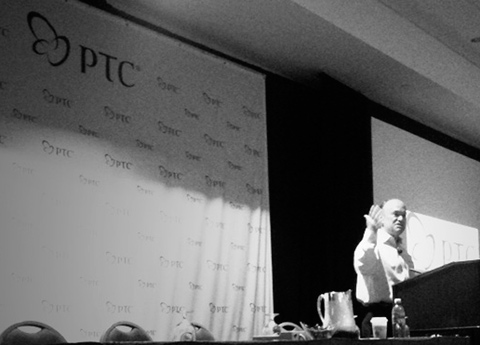
Jim Heppelmann probably won’t be getting a Christmas card from Dassault this year
It’s been a long day here in the humid climate of Florida, but the constant chill of air-conditioning has kept the majority of visitors indoors and at the presentations on the first day.
The big speeches were made early on, with the keynote showing a rather unemotional leadership changeover from Dick Harrison to Jim Heppelmann with nothing more than a handshake and a quick ‘exit stage right’ for the former CEO.
Heppelmann was quick to launch into a taster of what he was storing up for later, the new project from PTC of ‘Project Lightning’. Describing the current CAD market as a ‘mature industry’, he added that it’s become “less exciting”. Project Lightning, he later added in a meeting with the media, would be PTC’s “offensive on the CAD market”, although how it would plan out was still unsure.
Rumours were abound that it would see a merger of Pro/Engineer and Co-Create, while others were adamant that it was still in its design stages and would be a long way off a prototype version, but just in time for the scheduled October 28 launch that will outline PTC’s CAD plan for the next 20 years.
Keen to promote the PLM side of business, Windchill and the Microsoft SharePoint based Product Point were both at the centre of attention, although apart from the addition of several new big name clients, very little seemed to have changed since DEVELOP3D spoke to them in February at the Media Analyst day.
Back then we described it as PTC taking off the gloves in the PLM market, although the heaviest blows were today fired at Dassault Systemes. The broadside from Heppelmann was aimed directly at the V6 platform. “I think their future’s not so promising as their past has been. We look at V6 – I think it’s V5 plus one,” he said, adding that it lacked ‘innovation’.
A few other little things stood out, like a brief look at Windchill version 10: 27 months in the making and with a much cleaner look than its predecessor. Collaborative design “inside the firewall” looked like a social collaborative tool that could actually work, like a Facebook for engineers, micro blogging was encouraged, image posting for solving design problems/stealing someone else’s’ solutions, to the extent that you can even ‘like’ a colleague’s post.
Hopefully day two will bring more design-based software revelations.






